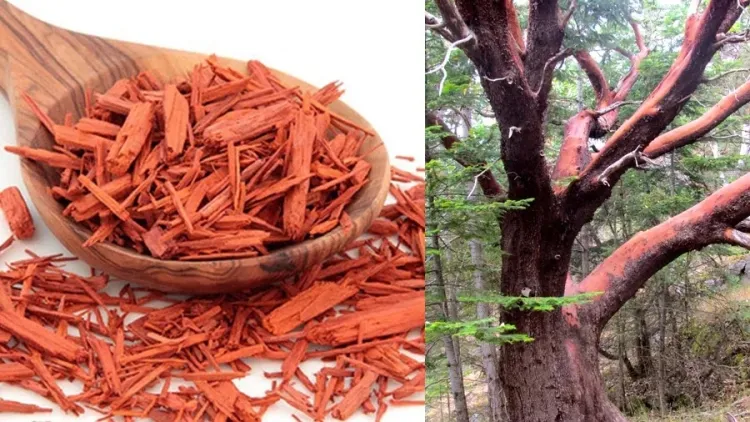Sandalwood: A Fragrant Treasure and Timeless Healer...!!!
Sandalwood is a versatile and highly valued resource, cherished for its fragrance and therapeutic properties. From perfumes and cosmetics to traditional medicine and cultural practices, sandalwood continues to play a significant role in various aspects of life. Sustainable cultivation and responsible use are essential to preserve this precious resource for future generations.

Sandalwood is a highly valued aromatic wood, cherished for its unique fragrance and various applications.
Types of Sandalwood
-
Indian Sandalwood (Santalum album):
-
Habitat: Native to India and Southeast Asia.
-
Features: Renowned for its high-quality heartwood, which is highly aromatic and sought after for its oil.
-
Uses: Extensively used in perfumes, cosmetics, and traditional medicine.
-
-
Australian Sandalwood (Santalum spicatum):
-
Habitat: Found in the semi-arid regions of southwestern Australia.
-
Features: Grows taller than Indian sandalwood and has a slightly different fragrance profile.
-
Uses: Employed in perfumery, aromatherapy, and as a sustainable alternative to Indian sandalwood.
-
-
New Caledonian Sandalwood (Santalum austrocaledonicum):
-
Habitat: Native to New Caledonia and Vanuatu.
-
Features: Produces high-quality oil with a unique scent.
-
Uses: Used in perfumes, incense, and traditional medicine.
-
-
Hawaiian Sandalwood (Santalum haleakalae):
-
Habitat: Found in subalpine areas of Maui, Lanai, and Molokai in Hawaii.
-
Features: Known for its distinct fragrance and limited availability.
-
Uses: Used in niche perfumery and traditional Hawaiian practices.
-
-
Desert Quandong (Santalum acuminatum):
-
Habitat: Native to central deserts and southern areas of Australia.
-
Features: A semi-parasitic plant that produces aromatic wood.
-
Uses: Utilized in traditional medicine and as a source of essential oil.
-

Uses of Sandalwood
Sandalwood has a wide range of applications, owing to its distinct fragrance and therapeutic properties. Here are some common uses:
-
Perfumery: Sandalwood oil is a key ingredient in many perfumes and fragrances due to its rich, woody scent that serves as a long-lasting base note.
-
Aromatherapy: The calming and soothing properties of sandalwood make it popular in aromatherapy, believed to reduce stress, anxiety, and promote relaxation.
-
Cosmetics: Sandalwood is incorporated into various cosmetic products, including soaps, lotions, and creams, for its fragrance and skin-soothing properties.
-
Traditional Medicine: In Ayurveda and traditional Chinese medicine, sandalwood is used to treat a range of ailments, including skin conditions, digestive issues, and respiratory problems.
-
Incense: Sandalwood is a common ingredient in incense sticks and cones, used in religious ceremonies, meditation, and to create a calming atmosphere.
-
Cultural Practices: In India, sandalwood paste is used in religious rituals and to mark the forehead as a symbol of sanctity. It is also part of traditional ceremonies and festivals.
-
Health Benefits: Sandalwood oil possesses anti-inflammatory, antioxidant, and antimicrobial properties. It is used to treat skin conditions like acne and eczema and to promote overall skin health.
-
Musical Instruments: Sandalwood is used to make certain musical instruments, such as the sitar, due to its resonant qualities and pleasant scent.
-
Cultural Significance: Sandalwood holds cultural and spiritual significance in many cultures, symbolizing purity, peace, and enlightenment.
-
Crafts and Carvings: The wood is used to create intricate carvings, sculptures, and decorative items because of its fine grain and workability.
Sandalwood is a versatile and highly valued resource, cherished for its fragrance and therapeutic properties. From perfumes and cosmetics to traditional medicine and cultural practices, sandalwood continues to play a significant role in various aspects of life. Sustainable cultivation and responsible use are essential to preserve this precious resource for future generations.
What's Your Reaction?















